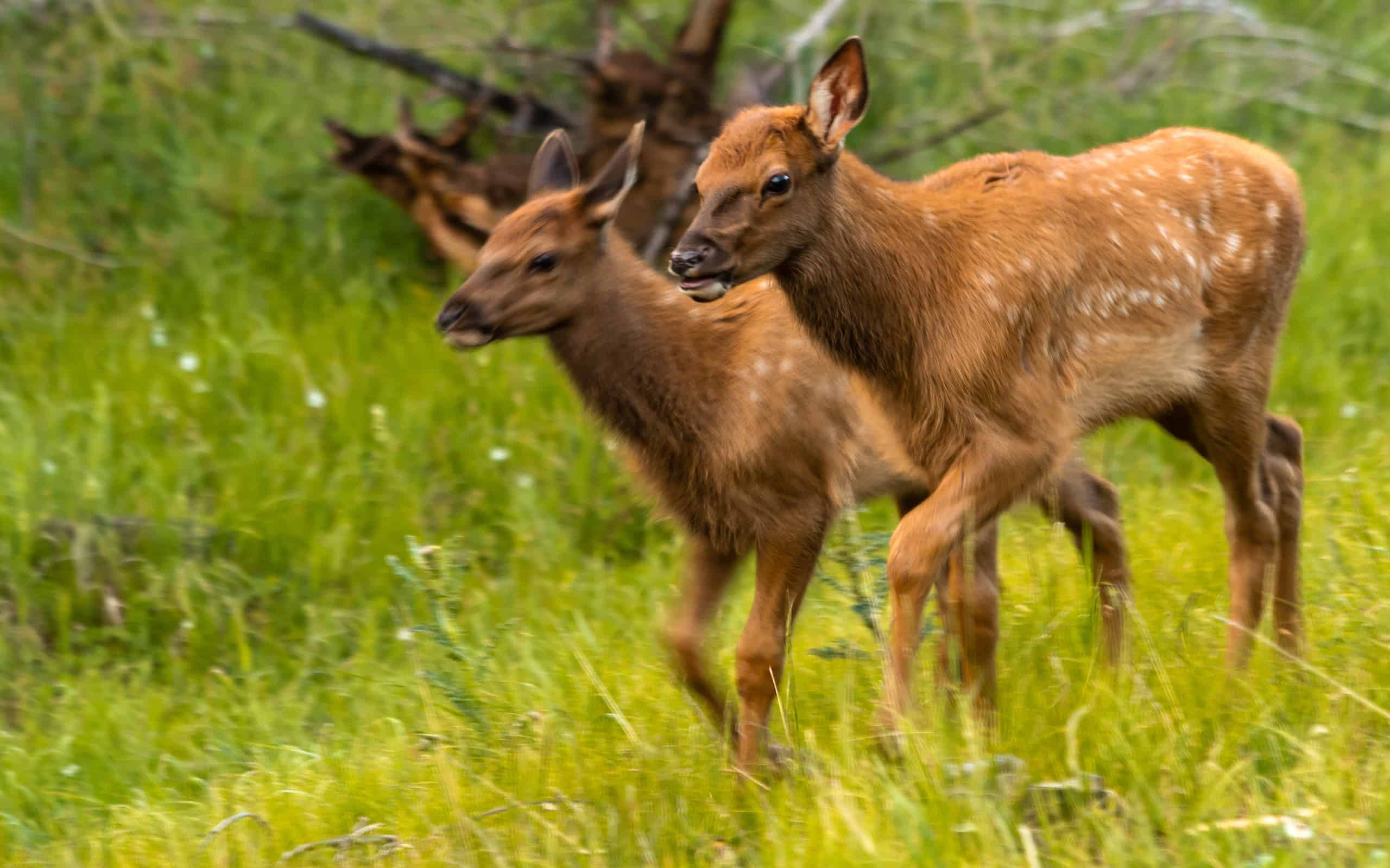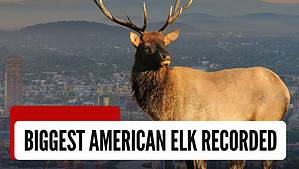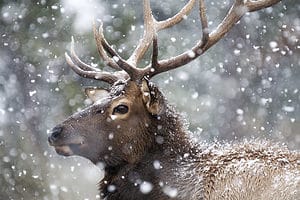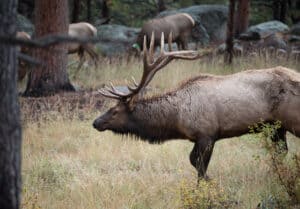A baby elk calf is an extraordinary creature, an adorable combination of big brown eyes and soft fur, in addition to incredible strength and resilience. Born amidst the rugged wilderness, baby elk have many adaptations that help them to live and thrive, all while playing and exploring their world. Let’s dive in and explore some amazing facts and adorable pictures of baby elk calves!
1. There Is Just One Species of Elk, but There Are Many Subspecies

Only male elk grow antlers.
©Delbars/Shutterstock.com
Baby elk are born to six different subspecies. Subspecies are smaller groups within a given species that have unique characteristics that set them apart from other members of the same species. In Asia, you’ll find the Alashan wapiti (Cervus canadensis alashanicus) and the Manchurian red deer (Cervus canadensis xanthopygus). The Rocky Mountain elk (Cervus canadensis nelsoni), the Roosevelt elk (Cervus canadensis roosevelti), the tule elk (Cervus canadensis nannodes), and the Manitoba elk (Cervus canadensis manitobensis) live in North America.
The largest subspecies is the Roosevelt elk, which lives in the western United States and British Columbia in Canada. In Alaska, male elk or bulls grow up to 1,300 pounds! The tule elk (Cervus canadensis nannodes) lives only in California and is the smallest type of elk. Males weigh between 450 and 550 pounds, while females weigh 375 to 425 pounds.
2. Almost Every Baby Elk Is an Only Child
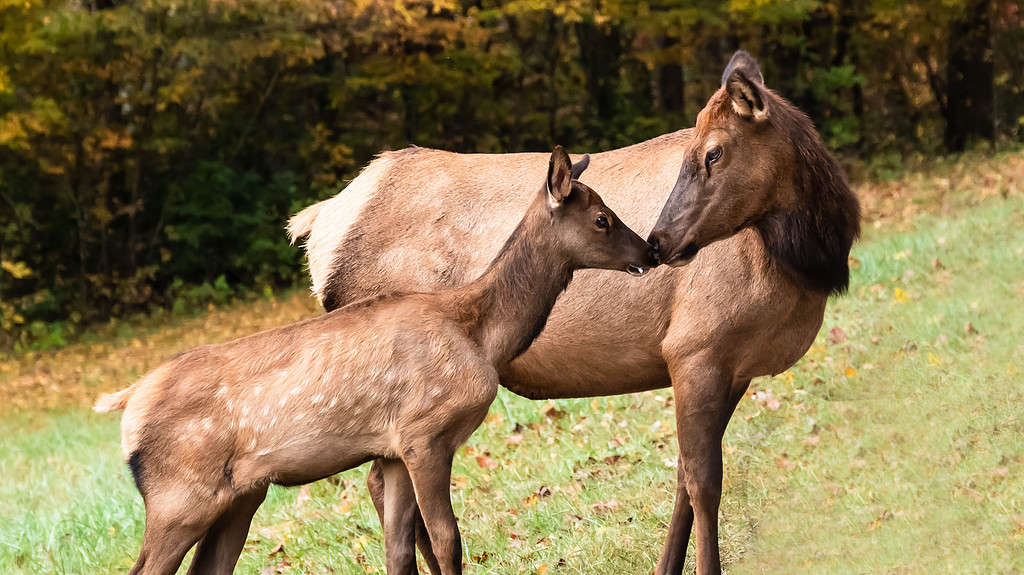
Elk mothers form strong bonds with their baby calves.
©RCKeller/iStock via Getty Images
Baby elk are called calves, while their mothers are referred to as cows. Male elk are called “spikes” for the first year until they grow forked antlers. Adult males are referred to as bulls.
After an eight to nine-month gestation period, a female elk or cow gives birth to a single calf. Only on very rare occasions will a female give birth to twins. Twin calves are typically smaller than solo-born babies and take more energy and resources from their mothers.
3. Baby Elk Grow Really Fast
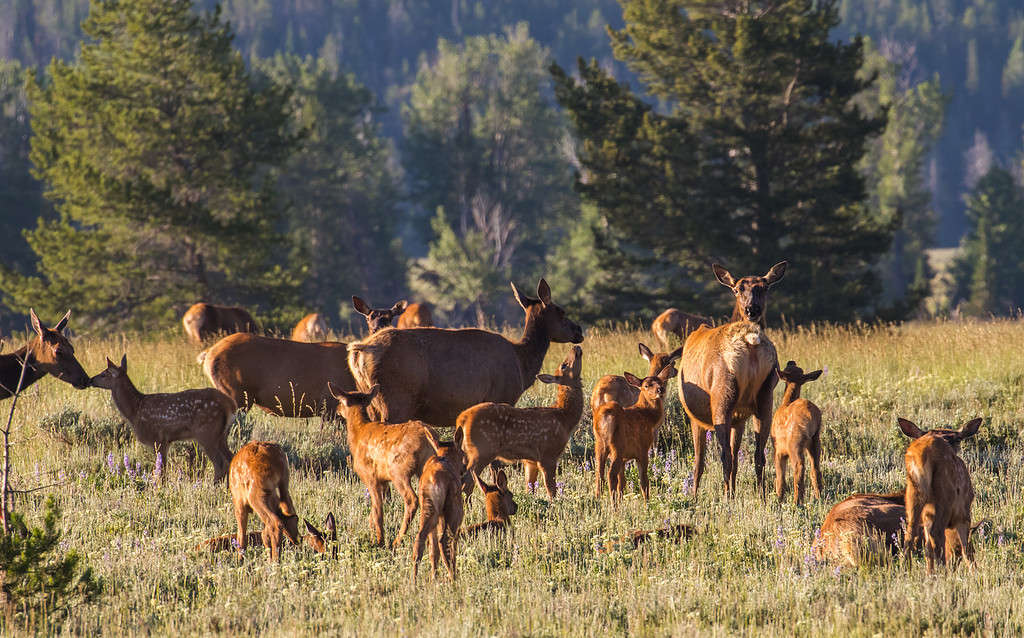
Female cows and their baby calves live together in herds.
©SBTheGreenMan/iStock via Getty Images
Baby elk weigh between 30 to 40 pounds when they are born. However, baby elk grow really fast due to their steady diet of nearly a gallon of their mother’s milk each day. Until they are around two months old, a baby elk will gain between one to three pounds every single day!
At full size, elk are enormous — in fact, they are the second largest deer species, just behind the moose. Adult elk stand 2.5 to 4.5 feet at the shoulder, measuring 5 feet to nearly 9 feet in length. Females can weigh between 350 and 650 pounds. Males, on the other hand, are heavyweight champions, coming in an astounding 390 pounds to over 1,000 pounds! And on top of that, male elk also grow 4-foot-tall antlers, which makes them nearly 9 feet tall!
4. Baby Elk Calves Are Born Scentless
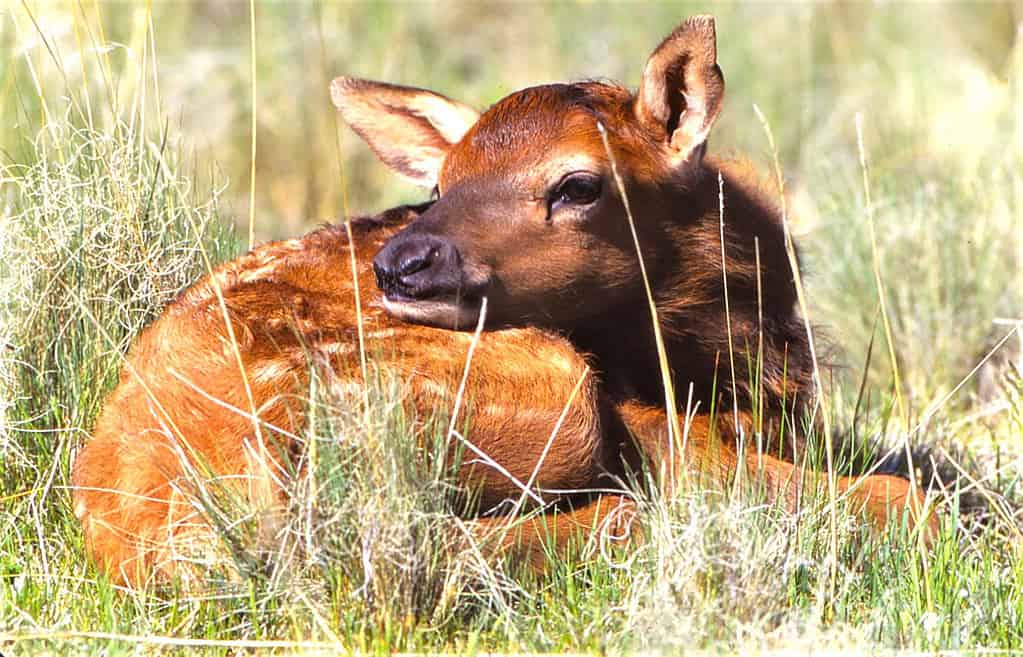
Newborn elk can stand up on their own in the first 20 minutes of life.
©Richard Jackson/iStock via Getty Images
Life for baby elk is far from easy. They are very vulnerable and defenseless at first, although they do have a few protective tricks from Mother Nature. Baby elk calves are born scentless, so predators cannot smell and locate them. They remain still and quiet during the first week of life, concealed out of harm’s way in bushes or tall grass.
However, this does not last long, as they develop a scent and can be tracked by predators. Around two weeks old, the mother and baby elk join the herd, but even in a group, they are vulnerable. Predators often prowl along the fringes of elk herds, relentlessly searching for a defenseless calf. Cunning predators like coyotes.
5. They Also Have White Spots
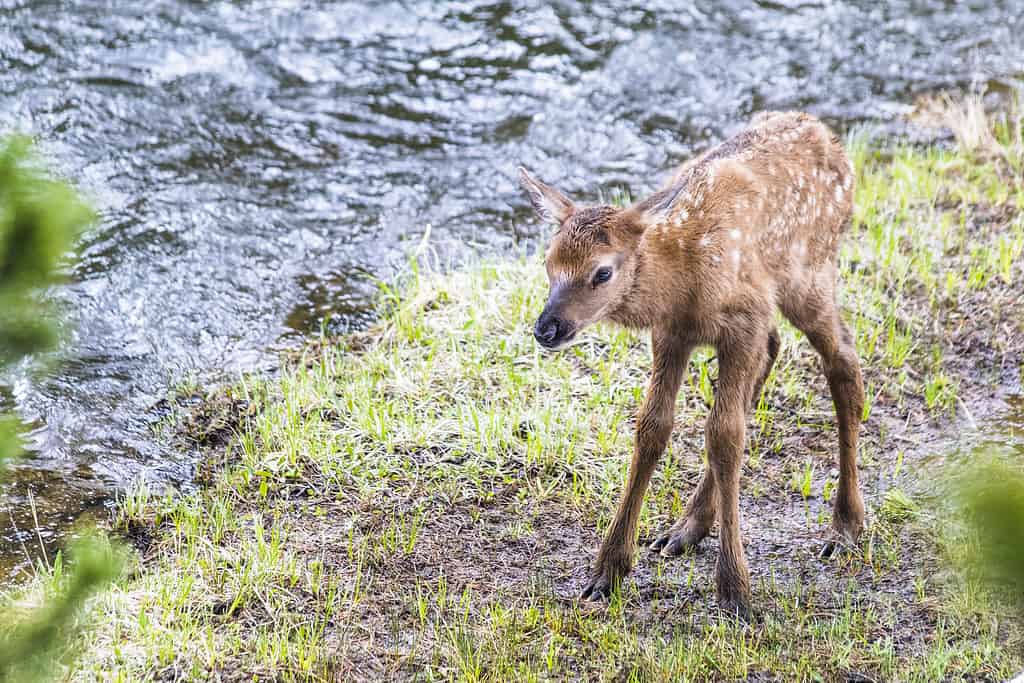
Elk are also called wapiti, which is a Native American term that means “light-colored deer”.
©Nathan McDaniel/iStock via Getty Images
In addition to their lack of scent, baby elk calves are born with white spots. These subtle markings camouflage calves and make them difficult to find. Baby elk calves spend this first week or two hiding motionless in the grass or a bush while their mothers feed in nearby areas. They are still extremely vulnerable, but their white spots and initial lack of a scent help protect them.
6. A Baby Elk Calf Stands up Super-Fast

Elk twins are very rare.
©tvirbickis/iStock via Getty Images
Although they spend much of their first few weeks hiding amongst vegetation, baby elk calves also need to be able to stand as soon as possible so they can nurse from their mothers. Fortunately, nature has also equipped them with special biology and strength. Within just 20 minutes from the time they are born, these resilient baby elk calves can stand up completely on their own!
After a few weeks, calves and their mothers eagerly join the herd. When they are around 16 months old, baby elk are old enough to embrace the next independent chapter of their lives.
7. Baby Tule Elk Are Endangered
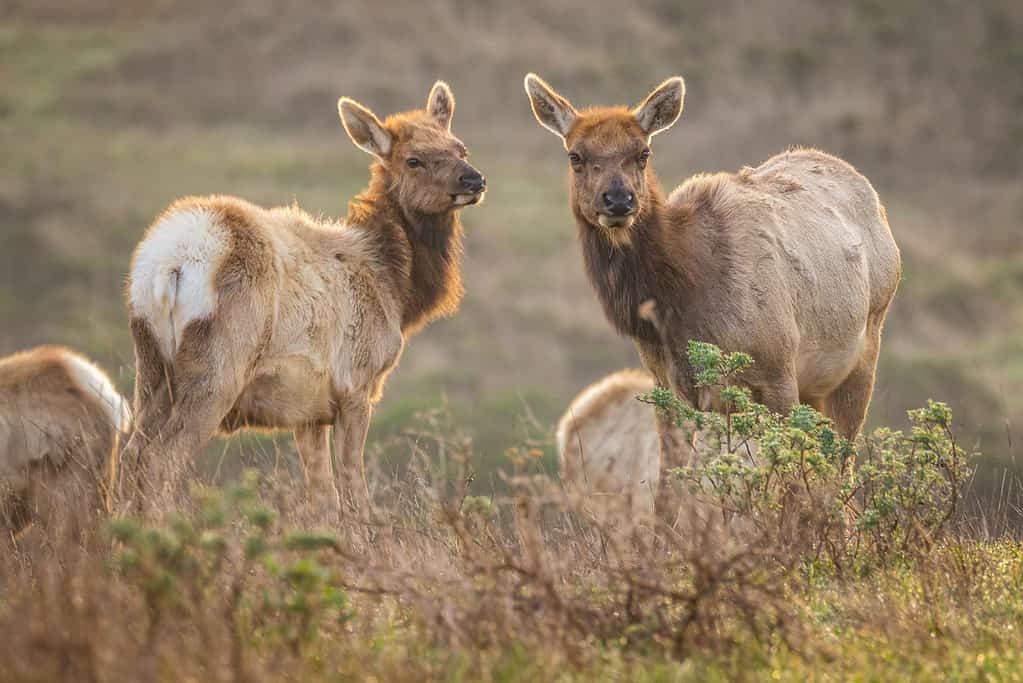
Tule elk are the smallest subspecies of elk, growing just 375 to 550 pounds as adults.
©Allen Allnoch/iStock via Getty Images
Most subspecies of elk have fairly large populations. The tule elk, however, is endangered. Named for the native sedge that grows near its feeding grounds, tule elk only live in California. Their populations are spotty, with a small number of around 6,000 elk in California. They once roamed across the state, with nearly 500,000 elk in California when the Europeans first arrived. Sadly, the new settlers decimated the population, which all but disappeared in the 1870s, with only two tule elk remaining.
Thanks to careful management and reintroduction efforts, the subspecies has made a remarkable recovery, but it still has a very long way to go. One of the biggest challenges that tule elk face today is habitat loss, including human-produced barriers like barbed wire fences and highways.
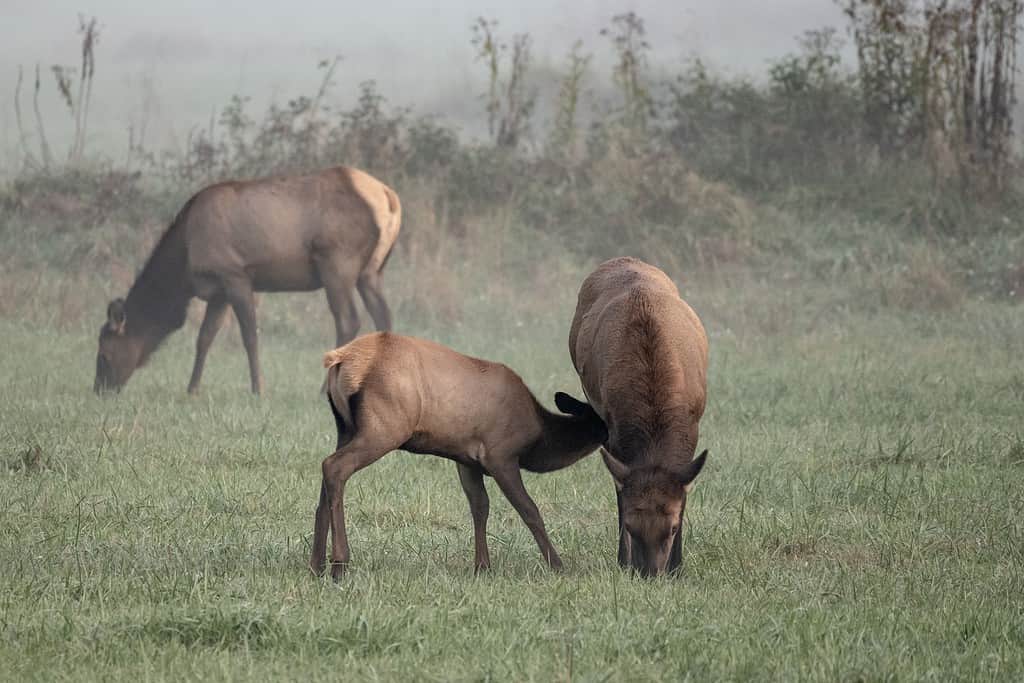
Baby elk must quickly learn to stand and nurse in order to survive.
©Kelly vanDellen/Shutterstock.com
Thank you for reading! Have some feedback for us? Contact the AZ Animals editorial team.

